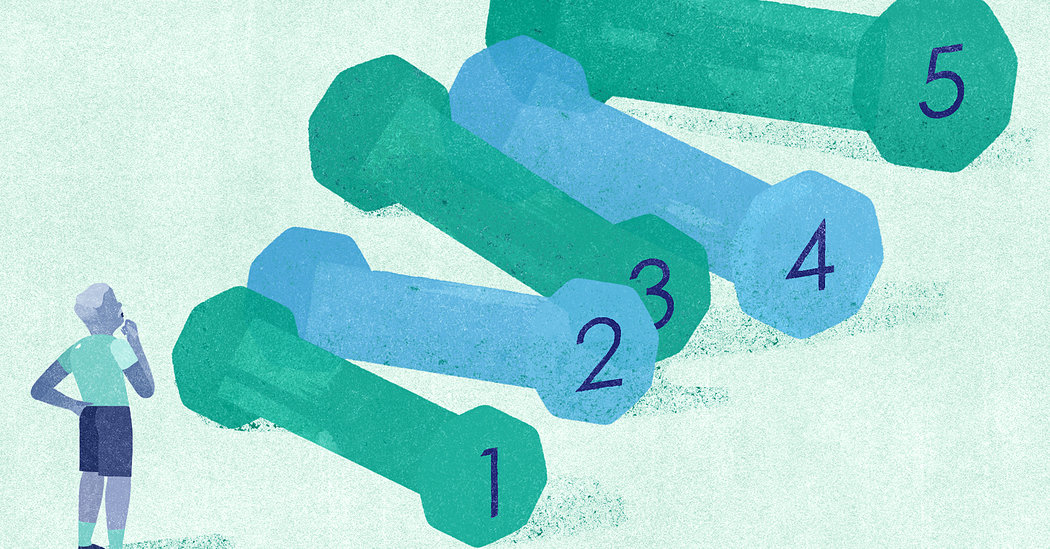
Two years later in JAMA, Dr. Maria A. Fiatarone and colleagues at the Tufts research center reported that eight weeks of “high-intensity resistance training” significantly enhanced the physical abilities of nine frail nursing home residents aged 90 and older. Strength gains averaged 174 percent, mid-thigh muscle mass increased 9 percent and walking speed improved 48 percent.
So, what are you waiting for? If you’re currently sedentary or have a serious chronic illness, check first with your doctor. But as soon as you get the go-ahead, start a strength-training program using free weights, resistance bands or machines, preferably after taking a few lessons from a physical therapist or certified trainer.
Proper technique is critical to getting the desired results without incurring an injury. It’s very important to start at the appropriate level of resistance. Whether using free weights, machines, bands or tubes, Dr. Moffat offers these guidelines:
“Start with two repetitions and, using correct form through the full range of motion, lift slowly and lower slowly. Stop and ask yourself how hard you think you are working: ‘fairly light,’ ‘somewhat hard’ or ‘hard.’ If you respond ‘fairly light,’ increase the weight slightly, repeat the two reps and ask yourself the same question. If you respond ‘hard,’ lower the weight slightly and do two reps again, asking the question again.
“If you respond truthfully ‘somewhat hard,’ you are at the correct weight or machine setting to be exercising at a level that most people can do safely and effectively to strengthen muscles. Continue exercising with that weight or machine setting and you should fatigue after eight to 12 reps.”
Of course, as the weight levels you’re working at become easier, you should increase them gradually or increase the number of repetitions until you fatigue. Strength-training will not only make you stronger, it may also enhance bone density.
The fact that you may regularly run, walk, play tennis or ride a bike is not adequate to prevent an incremental loss of muscle mass and strength even in the muscles you’re using as well as those not adequately stressed by your usual activity. Strengthening all your skeletal muscles, not just the neglected ones, just may keep you from landing in the emergency room or nursing home after a fall.

